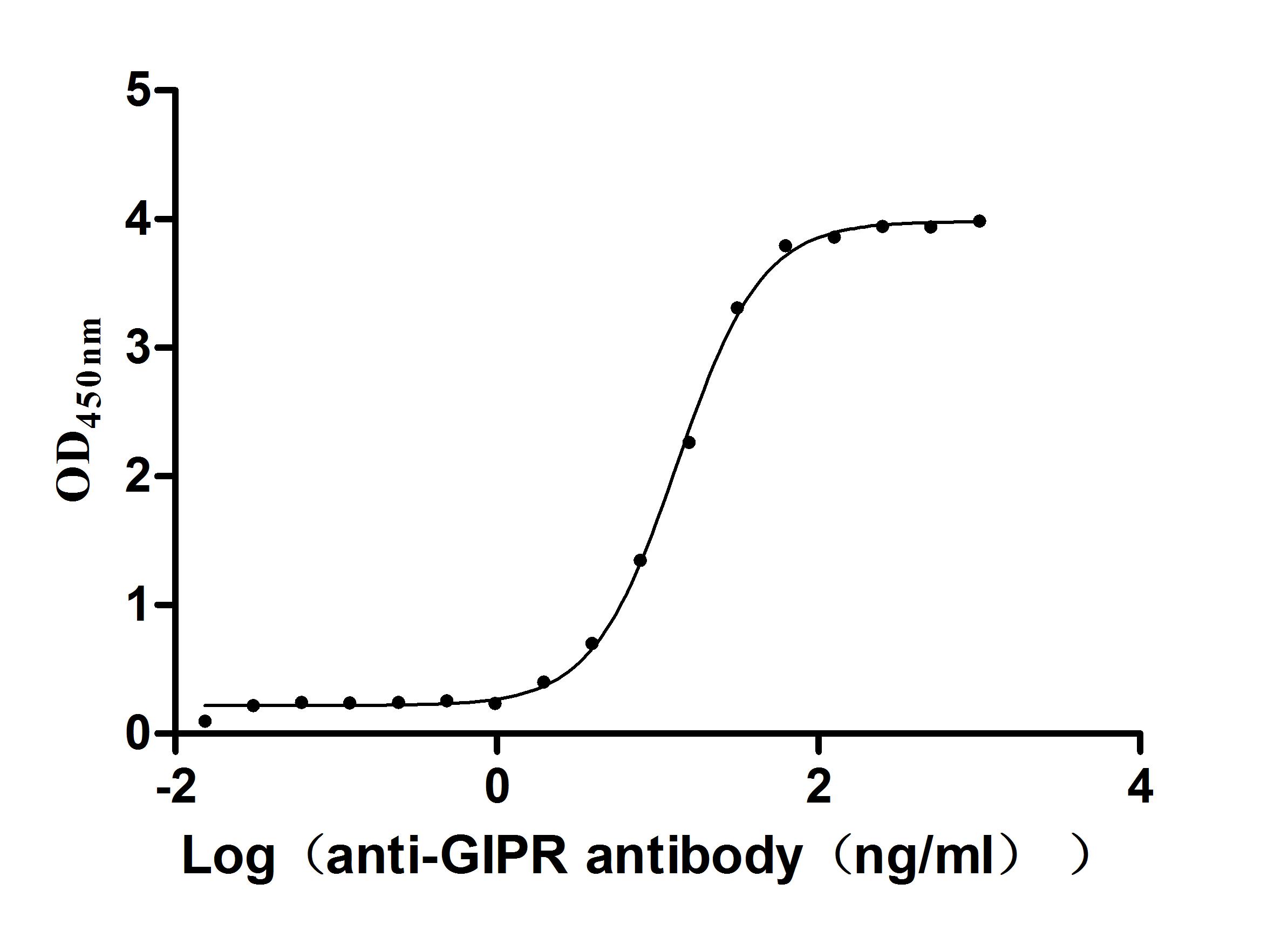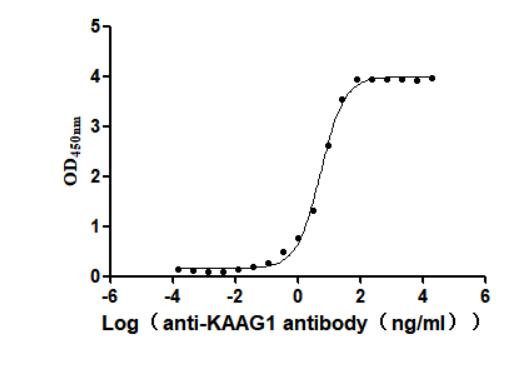Recombinant Mouse Cystinosin (Ctns)
-
中文名称:Recombinant Mouse Cystinosin(Ctns)
-
货号:CSB-CF006174MO
-
规格:
-
来源:in vitro E.coli expression system
-
其他:
产品详情
-
基因名:Ctns
-
Uniprot No.:
-
别名:Ctns; Cystinosin
-
种属:Mus musculus (Mouse)
-
蛋白长度:Full length protein
-
表达区域:1-367
-
氨基酸序列MRRNWLLILTLFLLMFIEKYESTVSLTAPPTVKLENGSSTNVDITLGHPLNSTLVITFEV TFRSKNLTIVELPDEVIVPRGEKNASFQVTSQNIGQVTVFLHGNHSNQTCPRIRFLVIHS RIVSIINQVIGWIYFMAWSVSFYPQVIQNWRRKSVIGLSFDFLALNLTGFVAYSVFNIGL LWVPYIQEEFLLKYPNGVNPVDSNDAFFSLHAVALTLIVILQCCLYERGNQRVSWPSIGF LVLAWLFVLVTMIVAAVGITTWLQFLFCFSYIKLIITLIKYFPQAYMNFYYKSTKGWSIG GVLLDFTGGSFSLLQMFLQSYNNDQWTLIFGDPTKFGLGVFTIFFDVVFFIQHFYLYRKK PGYDQLN
Note: The complete sequence including tag sequence, target protein sequence and linker sequence could be provided upon request. -
蛋白标签:N-terminal 10xHis-tagged
-
产品提供形式:Liquid or Lyophilized powder
Note: We will preferentially ship the format that we have in stock, however, if you have any special requirement for the format, please remark your requirement when placing the order, we will prepare according to your demand. -
缓冲液:Lyophilized from Tris/PBS-based buffer, 6% Trehalose, pH 8.0
-
储存条件:Store at -20°C/-80°C upon receipt, aliquoting is necessary for mutiple use. Avoid repeated freeze-thaw cycles.
-
保质期:The shelf life is related to many factors, storage state, buffer ingredients, storage temperature and the stability of the protein itself.
Generally, the shelf life of liquid form is 6 months at -20°C/-80°C. The shelf life of lyophilized form is 12 months at -20°C/-80°C. -
货期:Basically, we can dispatch the products out in 1-3 working days after receiving your orders. Delivery time may differ from different purchasing way or location, please kindly consult your local distributors for specific delivery time.Note: All of our proteins are default shipped with normal blue ice packs, if you request to ship with dry ice, please communicate with us in advance and extra fees will be charged.
-
注意事项:Repeated freezing and thawing is not recommended. Store working aliquots at 4°C for up to one week.
-
Datasheet & COA:Please contact us to get it.
相关产品
靶点详情
-
功能:Cystine/H(+) symporter that mediates export of cystine, the oxidized dimer of cysteine, from lysosomes. Plays an important role in melanin synthesis by catalyzing cystine export from melanosomes, possibly by inhibiting pheomelanin synthesis. In addition to cystine export, also acts as a positive regulator of mTORC1 signaling in kidney proximal tubular cells, via interactions with components of the v-ATPase and Ragulator complexes. Also involved in small GTPase-regulated vesicle trafficking and lysosomal localization of LAMP2A, independently of cystine transporter activity.
-
基因功能参考文献:
- LAMP2A trafficking is regulated by cystinosin, Rab11, and RILP and that CMA up-regulation is a potential clinically relevant mechanism to increase cell survival in cystinosis. PMID: 28465352
- Data indicate that hematopoietic stem cell (HSC) transplantation in cystinosin knockout (Ctns-/-) thyroid drastically decreased cystine accumulation and normalized the thyroid-stimulating hormone level. PMID: 26812160
- Cells and tissues lacking CTNS expression are characterized by increased autophagosome numbers, but functional macroautophagic flux. PMID: 25586965
- The onset of Fanconi syndrome in knockout mice is between 3 and 6 months of age with structural and functional changes in proximal tubular cells (PTCs), with focus on endocytosis of ultrafiltrated disulfide-rich proteins as a key source of cystine. PMID: 24525030
- The Ctns(-/-) mouse model generated on C57BL/6 background is not suitable for clarifying the pathogenesis of male infertility in cystinosis. PMID: 22578532
- Deletion of cystinosis gene (Ctns) causes corneal cystine crystals formation, neovascularization and scarring in the cornea of ctns transgenic mice mimicking cystinosis in humans. PMID: 21897743
- CTNS has a role in proper functioning of the retina and bones, and in mouse behavior PMID: 12370309
- Temporospatial pattern of cystine accumulation in Ctns-/- mice parallels that of patients and validates the mice as a model for the ocular anomalies of cystinosis. PMID: 17597652
- Data provide the proof-of-concept that gene transfer is feasible for correcting defective lysosomal transport, but suggest that, in the case of cystinosis, it could be preventive but not curative in some tissues. PMID: 18578013
显示更多
收起更多
-
亚细胞定位:Lysosome membrane; Multi-pass membrane protein. Melanosome membrane; Multi-pass membrane protein.
-
蛋白家族:Cystinosin family
-
数据库链接:
KEGG: mmu:83429
STRING: 10090.ENSMUSP00000006103
UniGene: Mm.259852
Most popular with customers
-
Recombinant Human Tumor necrosis factor ligand superfamily member 8 (TNFSF8), partial (Active)
Express system: Mammalian cell
Species: Homo sapiens (Human)
-
Recombinant Human Tyrosine-protein kinase Mer (MERTK), partial (Active)
Express system: Mammalian cell
Species: Homo sapiens (Human)
-
Recombinant Mouse Retinol-binding protein 4 (Rbp4) (Active)
Express system: Mammalian cell
Species: Mus musculus (Mouse)
-
Express system: Mammalian cell
Species: Homo sapiens (Human)
-
Recombinant Macaca fascicularis Trophoblast glycoprotein (TPBG), partial (Active)
Express system: Mammalian cell
Species: Macaca fascicularis (Crab-eating macaque) (Cynomolgus monkey)
-
Recombinant Human Myosin regulatory light chain 12B(MYL12B) (Active)
Express system: E.coli
Species: Homo sapiens (Human)
-
Recombinant Macaca fascicularis Gastric inhibitory polypeptide receptor (GIPR), partial (Active)
Express system: yeast
Species: Macaca fascicularis (Crab-eating macaque) (Cynomolgus monkey)
-
Recombinant Human Kidney-associated antigen 1(KAAG1) (Active)
Express system: Baculovirus
Species: Homo sapiens (Human)




















